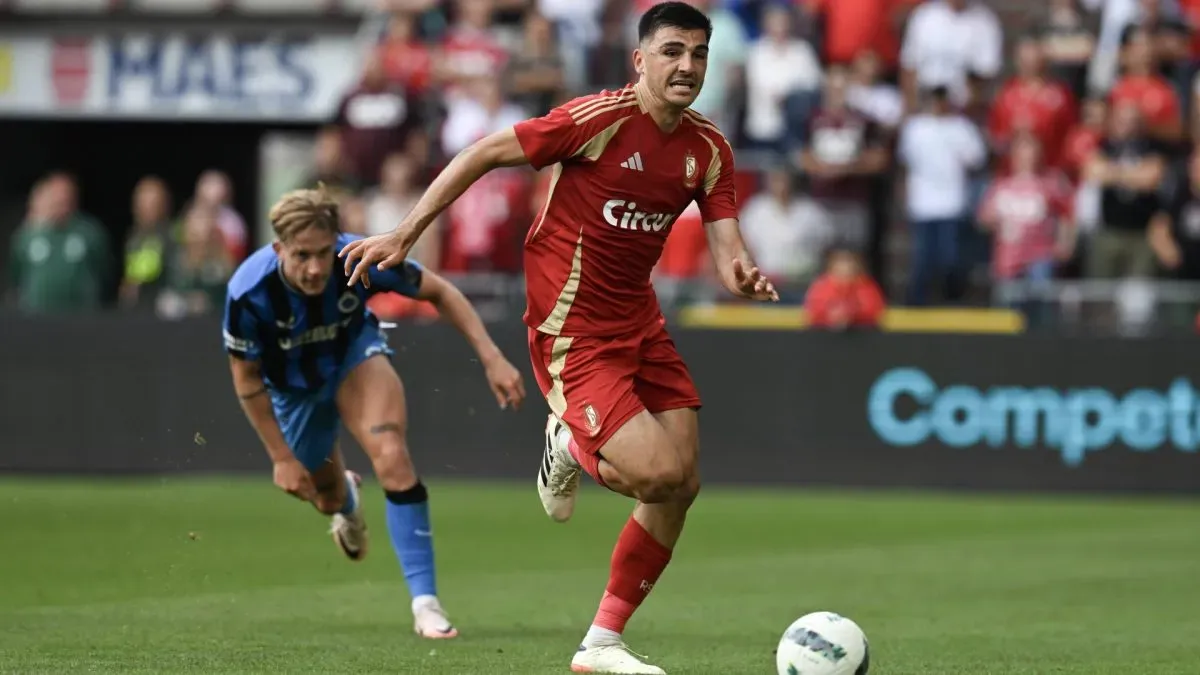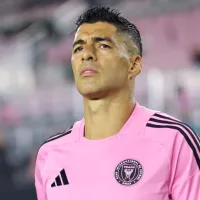Belgium is one of Europe’s most unique countries. This land bordering the Netherlands, France, Germany, Luxembourg and the North Sea was once part of the French Empire between 1794 and 1814 and then the Dutch Kingdom (Until 1830). The country itself is divided by linguistic and cultural differences more tangible than most countries. However, one thing can unify the Belgians: the love of football.
Many Belgian clubs bear the title Koninklijk, Royale, Königliche or Royal. This title has been given to clubs recognized by the National Football Association for fifty years or longer. The Belgian FA then issues matricule numbers ascending from number one. The lower the number, the older the club.
Like many places worldwide, football was brought to Antwerpian grounds by Englishmen. The students initially founded a cricket club, subsequently becoming a football club in 1887. Royal Antwerp is the oldest club in Belgium and takes pride in having the matricule number one sewn to the crest.
The Royal Antwerp experience is different. The club and fanbase draw comparisons to English football due to their chants and stadium aesthetic. The Bousilstadion has a unique style within Belgium. The ground was built in 1923 and Tribune 2 still bears the original wooden seats. Tribune four has a roof reminiscent of a twentieth-century English ground, giving off a certain charm.
Breaking down Belgian soccer based on geography
The South
The cities of Liège and Charleroi are located in the east and center of Belgium, respectively. The two play large roles in the Wallon Movement; a group known for their pride towards the worker and socialist political views. The Belgian General Strikes of 1936 and 1960-61 occurred when residents of Flanders and Wallonia linked hands to strike against Belgian deindustrialization. The 1960-61 strike in particular was fueled by dissatisfied Walloons, left angry at the halting of the coal and steel industries, leading to mass unemployment in the region. The latter strike ended up causing substantial damage in the cities and required army troops to stop the upheaval. That aggression seems to have been taken into their stadium ever since.
Standard Liège is known as the club of the workers, giving their fanbase a firm sense of belonging to something that represents the city. Passions at Stade Maurice Dufrasne tend to boil over to the point where in 2015 ex Belgium international Steven Defour saw a tifo depicting his decapitated head with the words ‘Red or Dead’ accompanying the text, following his transfer to arch-rivals Anderlecht.
Le Rouches’ fanbase is arguably the most vocal in Belgium, routinely making their stance well known. Multiple big games have been abandoned due to pitch invasions or flare-throwing. In recent years ultra-groups have displayed their discontent towards the complicated Pro League play-off system and poor club management.
From the outside, you sense that Wallonia feels detached from the Flemish people due to the financial disparity and the general differences in life. The deprecation towards Wallonia has snuck into their footballing psyche, thus the stark difference in how fans south of Brussels support their clubs.
The Southeast
Eupen is situated in eastern Liège, standing as the capital of the German-speaking community of Belgium. The region formed part of Germany until 1920 when the Treaty of Versailles officially declared Eupen a Belgian city in 1925.
Despite the strong German links, the 75,000-person community is largely proud of its Belgian nationality. Due to the low number of inhabitants, the local club KAS Eupen often had the smallest set of fans during their stints in The Pro League. Despite this, the Pandas can create a raucous atmosphere.
The history of Eupen and its football club are synonymous with one another. Germany again annexed the region during the Second World War before restoration within Belgian borders in 1945. In the same year, KAS Eupen was formed through a merger. The club was initially named Alliance Sportive Eupen. With a French-sounding name, the club struggled to attract German-speaking fans.
Once the club adopted a German title in Königliche Allgemeine Sportvereinigung Eupen a community started to forge, more specifically one where German speakers had something to celebrate and embody their region. Eupen, being new to Belgium has a direct correlation to the size of its clubs’ fanbase. As generations of fans develop, the club will continue to see a steady growth in numbers.

North meets south
Historically speaking Flanders is the most affluent and culturally appreciated part of Belgium, dating back hundreds of years. The cities of Brugge, Ghent and Antwerp played a big role in the modernization of the region, through the trading of cloth and wool around the Middle Ages, the region later became one of Europe’s cultural hubs. Today, Flanders remains one of the world’s richest. Those riches have significantly aided Flanders domestically speaking, largely translating into results on the pitch, with 106 out of 121 top-flight titles having gone to sides from Flanders and Brussels.
The difference between football in the north versus the south is linguistic. If you watch a Wallon side play, the chanting is in French, and vice versa with Flanders and Flemish/Dutch. The influence is fascinating. You can even distinguish where you are based on the tune of the chants.
The way fans choose to support their club is equally noticeable. A matchday in Wallonia includes pyrotechnics and ultra-groups who never stop chanting, producing frenetic energy. In the north you sense the feeling of celebration, people with beers in their hands; party-like. However, if their team does not perform said party will turn into blunt and critical reviews.
Duden Park revival
Union Saint-Gilloise has so much history. Yet, the eleven-time winner of the Belgian First Division drifted into obscurity after relegation in 1973. Union returned to the top flight in 2021 and has since adopted fans from all over. The Stade Joseph Marien is the country’s most unique stadium. The ground looks old, rusty and unspectacular but one will struggle to find a better atmosphere. The bond between player and fan is special, demonstrated by the post-game ritual. Players gather at the side of the pitch, and one player (typically the man of the match or a fan favorite) runs towards the crowd to initiate the ‘Brussels, ma ville’ chant.
Since 2018 owner Tony Bloom and his team have implemented an effective transfer policy, signing players with humble personalities and something to prove. The synchronization of those two characteristics continues to create a fast-growing fanbase that has since seen away days in Liverpool, Leverkusen and Istanbul.
League of their own
Two clubs have more rivals than any others in Belgium. Club Brugge and Anderlecht. The main reason for the dislike is success and the arrogance that comes with that. The fifty-three league titles between the two have created a duopoly since the late 1940s. The match known as De Topper (Top Match) between Club Brugge and Anderlecht is a rivalry from sporting grounds along with a splash of cultural contrast.
Anderlecht and Club Brugge started to bear the fruits of their labor in the 1950s and 1970s, coinciding perfectly with the restoration of the Flemish economy. Flanders once again became Belgium’s economic force primarily for its flat land which is useful for transportation and its ports and links to Europe.
Due to the western Flemish landscape, Club Brugge is colloquially referred to as ‘The Farmers,’ typified in their motto ‘No Sweat no Glory.’ Then you have Anderlecht, a team from the so-called bourgeois part of Brussels, who prefer to see a stylish approach leading them to victory, juxtaposed to Brugge who just want to see their team win.
A nuance in the Anderlecht fanbase is that they have a Flemish/Dutch and French-speaking fanbase. Anderlecht is based in the southwest of Brussels, a Flemish-speaking area while Brussels is roughly 85% French-speaking. Most Francophones believe that Standard Liège is Les Mauve’s biggest rival. The Flemish speakers will tell you that Club Brugge is theirs.
A European power from a small area
It is fascinating to see how a country so small possesses distinct differences in life and soccer culture. The disparity between north and south feels comparable to that of Italy. There, you have a majority of the success concentrated in one region. Belgium’s top flight seems to follow a cycle of having teams dominate over decade-long periods. The location of the champions has shifted over time. From season 1895-96 to 1909-10, all winners of the Belgium first division came from Brussels and further south until Cercle Brugge became Flanders’ first title winner in 1911. Wallonia initially had the upper hand, which deteriorated with the deceleration of industry.
PHOTOS: IMAGO.














